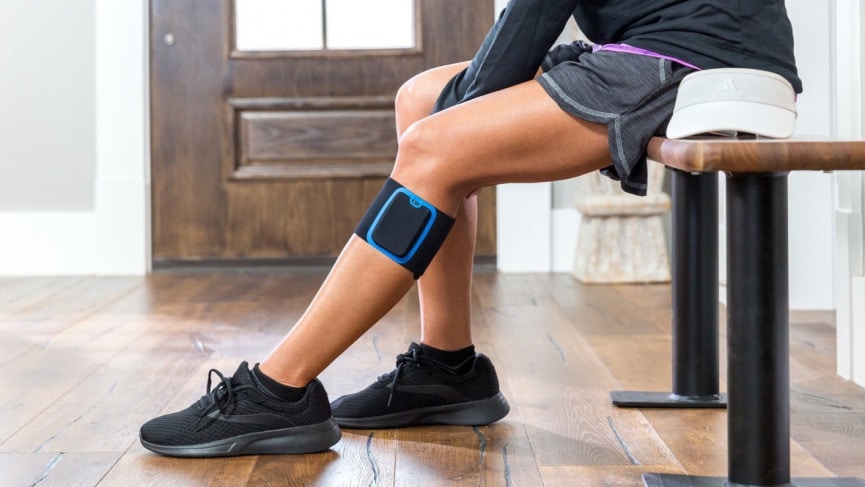Can Technology and Wearable Devices Assist in Pain Management?

Pain management is a critical concern in healthcare, and emerging technologies have the potential to offer new solutions.
This article examines the role of technology and wearable devices in assisting with pain management. Specifically, it explores the benefits of wearable devices in pain relief, the ability of technology to track and monitor pain levels, and innovative methods for managing chronic pain.
Additionally, it considers the future prospects of wearable devices in pain management. By analyzing these aspects, this article aims to evaluate the potential of technology in enhancing pain management strategies.
Key Takeaways
- Virtual reality therapy and mobile applications offer effective strategies for pain management.
- Wearable devices provide real-time monitoring and valuable insights into pain patterns and triggers.
- Technology enables objective measures and accurate assessment of pain levels.
- The integration of wearable devices with virtual reality holds promise for a more immersive pain management experience.
The Role of Technology in Pain Management
The use of technology has shown promise in assisting with pain management strategies.
Virtual reality (VR) therapy is one such technological advancement that has gained attention in recent years. VR therapy involves the use of immersive virtual environments to distract individuals from their pain and provide a sense of relaxation. Studies have shown that VR therapy can effectively reduce pain intensity and improve overall well-being in individuals with various types of pain, including chronic pain and acute procedural pain.
Additionally, mobile applications have emerged as another technology-based tool for pain management. These applications often include features such as guided meditation, mindfulness exercises, and pain tracking tools. The accessibility and convenience of mobile applications make them a popular choice for individuals seeking self-management strategies for their pain.
Overall, the integration of technology, such as virtual reality therapy and mobile applications, holds promise in improving pain management outcomes.
Benefits of Wearable Devices in Pain Relief
One potential advantage of utilizing wearable devices in the alleviation of discomfort is their capacity to provide real-time monitoring and data feedback. Wearable devices are increasingly being used in pain management techniques due to their effectiveness in providing continuous and objective measurement of various physiological parameters.
These devices can monitor factors such as heart rate, skin temperature, and body movement, which can help individuals and healthcare professionals better understand pain patterns and triggers. By collecting and analyzing this data, wearable devices can provide valuable insights into the effectiveness of pain management techniques and interventions.
Furthermore, real-time monitoring allows for timely adjustments to treatment plans and the ability to track progress over time. Overall, the use of wearable devices in pain management holds promise in improving the efficacy and individualization of treatment approaches.
How Technology Can Track and Monitor Pain Levels
Monitoring and tracking pain levels can be facilitated through the utilization of advanced technological tools. With the continuous advancements in technology, various devices and applications have been developed to assist in pain monitoring. These technologies provide objective measures of pain, allowing healthcare professionals to assess pain levels accurately and make informed decisions regarding pain management strategies. One such technology is wearable devices, which can track physiological changes associated with pain, such as heart rate, skin conductance, and movement patterns. Additionally, mobile applications enable individuals to self-report their pain levels, providing valuable data for pain management. The table below highlights some of the technological advancements and their role in pain monitoring.
| Technology | Description | Benefits |
|---|---|---|
| Wearable devices | Track physiological changes associated with pain | Objective pain assessment, continuous monitoring |
| Mobile applications | Enable self-reporting of pain levels | Patient involvement, convenient data collection |
Innovative Ways Technology Can Help Manage Chronic Pain
Innovative approaches implemented through technological advancements have shown promise in effectively addressing and alleviating chronic pain. Smartphone apps and virtual reality are two such technologies that have gained attention in recent years.
Smartphone apps provide individuals with chronic pain the opportunity to track and monitor their pain levels, as well as access resources and strategies for pain management. These apps often include features such as medication reminders, personalized exercise routines, and mindfulness techniques.
Virtual reality, on the other hand, offers a unique and immersive experience that can distract individuals from their pain. By creating a virtual environment that engages the senses, virtual reality has been found to reduce pain intensity and provide temporary relief.
Both smartphone apps and virtual reality have the potential to revolutionize chronic pain management by offering accessible and effective strategies for individuals seeking relief.
Exploring the Future of Wearable Devices in Pain Management
Exploring the potential of wearable devices in the field of pain management involves investigating novel approaches that can enhance the effectiveness of current strategies. Smart clothing, equipped with sensors and actuators, holds promise in this domain. It can provide real-time monitoring of physiological parameters, such as heart rate and muscle tension, allowing for personalized pain management interventions.
Virtual reality (VR) is another emerging technology that has shown potential in pain management. By immersing individuals in a virtual environment, VR can distract and engage the user, reducing their perception of pain. Additionally, wearable devices can be integrated with VR technology to provide a more immersive and interactive experience.
Overall, the future of wearable devices in pain management lies in the development of smart clothing and the integration of virtual reality, offering innovative approaches to alleviate pain and improve patients’ quality of life.
Frequently Asked Questions
What Are Some Examples of Wearable Devices That Can Assist in Pain Management?
Wearable devices for pain management offer various benefits. Examples include TENS units, which deliver electrical stimulation for pain relief, and smart clothing, which uses sensors to monitor and address pain symptoms.
How Accurate Are Wearable Devices in Tracking and Monitoring Pain Levels?
Wearable technology limitations affect the accuracy of tracking and monitoring pain levels. The effectiveness of wearable devices in this area is influenced by factors such as device calibration, individual variations in pain perception, and the subjective nature of pain assessment.
Are There Any Potential Risks or Side Effects Associated With Using Wearable Devices for Pain Relief?
There are potential risks and side effects associated with using wearable devices for pain relief. These include skin irritations, discomfort, interference with daily activities, and reliance on technology for pain management.
Can Technology and Wearable Devices Completely Replace Traditional Pain Management Methods?
Technology and wearable devices have the potential to enhance pain management, but they are not likely to completely replace traditional methods. Limitations in technology and the need for alternative methods suggest a complementary role for these devices.
What Are Some Challenges and Limitations of Using Technology and Wearable Devices in Pain Management?
Challenges and limitations of implementing technology in pain management include ethical considerations and issues related to accessibility and affordability. These factors need to be carefully addressed to ensure the successful integration of technology and wearable devices in pain management.








